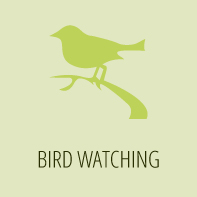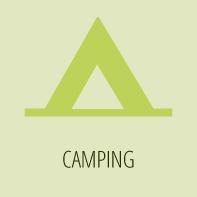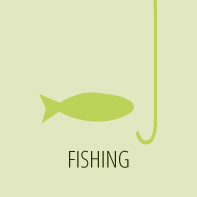Sibiloi National Park
Rather undiscovered, the gems that are KWS Parks in northern Kenya await discovery and exploration. Set on the wild and rugged shores of Lake Turkana, the cradle of mankind that is Sibiloi National Park is home to important archaeological sites including Koobi Fora where the fossil remains have contributed more to the understanding of human evolution than any other site in the continent. Visitors can see the fossil of a three million year old giant tortoise, an ancient species of crocodile and a behemoth dating back to millions of years.
This is as breeding sites for the largest Nile crocodile colonies globally, 47 fish species of which 7 are endemic, Important Bird Area (IBA) hosting thousands of globally threatened, Palearctic migrants and congregatory birds.
Distance: from Nairobi is 800km North of Nairobi.
By air: There are 2 all weather airstrips in the park. Other airstrips are also found in Marsabit, Loiyangalani, Kalokol, North Horr and Lodwar. Commercial flights however only operate on the Lodwar airstrip.
Gates: There is one main gate (Karsa gate); other gates are Alia bay and Koobi fora
Road: The roads connecting the park with the major town has both tarmac and murrum sections. Long distances are however rough roads. High clearance 4WD is essential all year round. Travelling in convoy is recommended.
The park is a three day drive from Nairobi via Marsabit and North Horr, or Maralal and South Horr
Alternatively travel by road from Nairobi to Kalokol on the lake’s western shores , via Kitale and Lodwar. From Kalokol boat hire services are available across the lake to Aliabay.
Sibiloi National Park |
Citizen |
Resident |
Non-Resident |
|||
|
Adults KSH |
Child KSH |
Adult KSH |
Child KSH |
Adult USD |
Child USD |
|
|
300 |
125 |
300 |
125 |
22 |
13 |
|
MODE OF PAYMENT: Through Ecitizen (https://kws.ecitizen.go.ke/ ) via MPesa, Visa Card, RTGS ,Electronic Funds Transfer (EFT)
Special Services/Activities:
Security/Guided tour per guide:
Ksh. 1,720 – up to 4 hours
Ksh. 3,015 – Over 4 hours
Lake Boating per Person Per Hour:
Ksh. 1,290
Vehicle Charge per Day:
No. of Seats KSH.
Less than 6 seats 300
6-12 seats 1,030
13-24seats 2,585
25-44 seats 4,050
45 seats and above 5,000
The park is characterized by a desert habitat and open plains flanked by volcanic formations including Mount Sibiloi, where the remains of the petrified forest can be seen, casts of elephants, giant tortoise, Koobi fora museum, TBI museum.
Lake Turkana which is the most saline of Africa’s large lakes, the largest of the chain of Rift Valley lakes in Kenya and the world’s largest permanent desert and alkaline lake. Sibiloi is a haven for 84 water bird species, while serving as a stopover for 34 Palearctic. 23 species breed here, including Ardea goliath, and up to 50 pairs of the regionally threatened Rynchops flavirostris have bred on Central Island.
Non-aquatic species include endangered northern topi, Somali ostrich, plain zebra, grant gazelle, gerenuk, spotted and stripped hyena, cheetah and lion. The park is surrounded by the Dassanach, Turkana and Gabra communities with very rich and unpolluted traditional cultures which is a great puller of visitors looking to experience the cultural aspect of the people at the destination.
Visitors can enjoy game viewing, camping, walking safaris, picnicking and boat safaris.
Crocodile Kingdom
Survivors of an epoch long before mankind, Lake Turkana’s estimated 12,000 crocodiles have not changed in 130 million years. Despite their monstrous size and formidable appearance they are generally inoffensive creatures living in perfect harmony with their environment and feeding on the lake’s prolific fish.
The world’s largest crocodile nursery
Crocodiles breed on the shores of the island’s crater lakes between April and May. The baby crocodiles can be heard squeaking in their eggs, which are buried deep beneath the sand to escape the predatory attentions of monitor lizards and raptors. Their cries bring their parents scurrying to dig them out and carry them down to the water’s edge, where they spend their first months.
Venomous reptiles and prehistoric fish
Turkana is home to some of the world’s most venomous reptiles, including saw-scaled viper, night and puff adder and cobra. There are also many species of fish including huge Nile perch and large tilapia. Puffer fish, a group normally found in seawater, indicate Turkana’s prehistoric connection to the Red Sea.
Abundant birdlife
The islands are home to a profusion of birdlife (over 84 water bird species), including 34 species of European migrants most spectacularly viewed as they return home between March and May. At least 23 species breed here, including Goliath heron, and African skimmer, while African open-billed stork, Duck and Gulls feed on the shores and the volcanic island lakes attract lesser flamingos. Birds of prey are also abundant, especially swallow-tailed kites.
KWS Self Catering
Alia Bay Guest House
Privately Owned Campsites & Lodges
Oasis Lodge
Lobolo Tented Camp
National Museums of Kenya, Koobi Fora
Sunset Strip Camp
Turkana Campsite
Toll Free: 0800 597 000
WhatsApp: +254 (0) 726 610508
Email: customerservice@kws.go.ke
Postal Address:
The Warden,
Sibiloi National Park,
P.O. Box 219,
Lodwar,
Kenya










